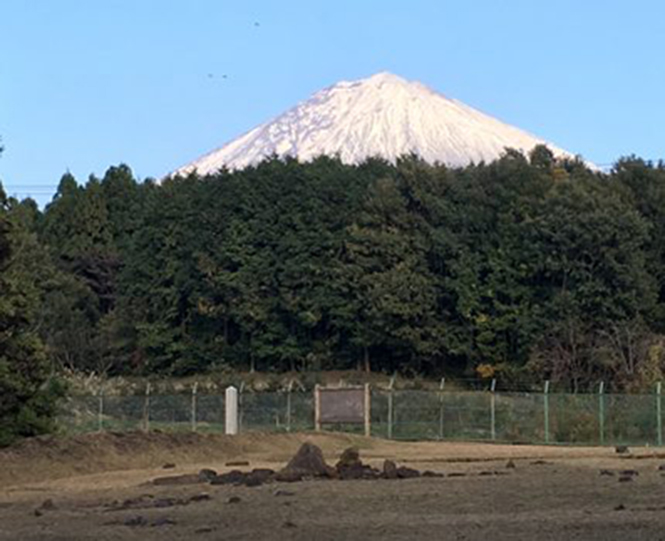
Third Thursday Lectures: Mount Fuji: Changing Landscapes in Japanese History
- 16 January 2020
- 6pm (Doors open 5:30pm)
- Weston Room, Cathedral Hostry, Norwich NR1 4DH
- https://sainsbury-institute.org/event/mount-fuji-changing-landscapes-in-japanese-history/
- 01603 597507
- isjac@sainsbury-institute.org
- Tweet
About the Talk
Fujisan, or Mt. Fuji, is a freestanding volcano and the highest mountain in Japan at 3,776m. Well known as Japan’s national icon, it has been of cultural significance throughout Japanese history and was inscribed as UNESCO Cultural World Heritage in 2013. Even though no eruption has been reported in the past three centuries, Mt. Fuji is a comparatively young and active volcano located on geological plate boundaries, the whole formation process of which has been witnessed by humans since its birth only approximately 17,000 years ago.
Recent archaeological research in the area has revealed that prehistoric ceremonial sites with stone alignments were in special locations in consideration of the connection to Mt. Fuji, suggesting that Mt. Fuji was already seen as a sacred mountain during the Jōmon hunting-gathering period (ca. 16,000-3,000 years ago). From the Heian period (8th to 12th Centuries) onwards, Mt. Fuji developed rapidly as a place for ascetic training by members of Shugendō, which is a Japanese mountain asceticism incorporating Shintō and Buddhist concepts. As pilgrimage to Mt. Fuji became popularized in the Edo period (17th to 19th Centuries), landscapes revolving around Mt. Fuji became widely influential and affected Japanese art greatly, as seen in Hokusai’s woodblock print series of “Fugaku Sanjūrokkei (Thirty-Six Views of Mt. Fuji)”. This lecture introduces the historical interactions between Mt. Fuji and people since prehistory and considers how its cultural meanings have changed in the course of the history up to this date. The lecture will also introduce issues following on the World Heritage inscription.
About the Speakers
Junzo Uchiyama is an environmental archaeologist, who obtained his M.A. from University of Durham in 1996 and PhD from SOKENDAI, the Graduate University for Advanced Studies, Japan in 2002. Based on the methodology of zooarchaeology, his main academic interest has been human historical adaptation processes to their environments during “Neolithisation”, the transitional period from hunting-gathering to agriculture-based societies since the Last Glacial period, using the Japanese Archipelago during the Jomon period as a main research field. He is currently Handa Japanese Archaeology Fellow at Sainsbury Institute for the Study of Japanese Arts and Cultures.
Mark Hudson is a researcher in the Eurasia3angle research group, Max Planck Institute for the Science of Human History, Jena, Germany. He was educated at SOAS, Cambridge and the ANU. He taught archaeology in Japan for more than 20 years and from 2016-2017 was Professor at the Mt Fuji World Heritage Centre in Shizuoka. His books include Ruins of Identity: Ethnogenesis in the Japanese Islands (Hawaii 1999) and (as co-editor) Multicultural Japan: Palaeolithic to Postmodern (Cambridge 1996) and Volume 1 of the Cambridge World History of Violence (forthcoming 2020). He is currently writing a book on Mount Fuji titled In the Shadow of Fuji: The Mountain at the Top of Deep Japan.
How to Book
Admission free. All welcome. Booking is essential.
Use our booking form, call us on 01603 597507 or email us.
Tthe Third Thursday Lecture Series is funded by the Gatsby Charitable Foundation, the Great Britain Sasakawa Foundation and Yakult UK.
